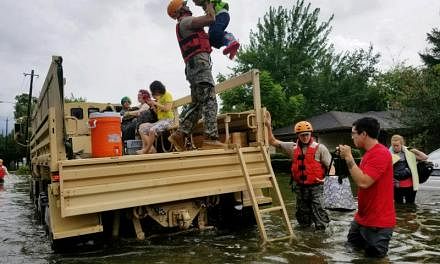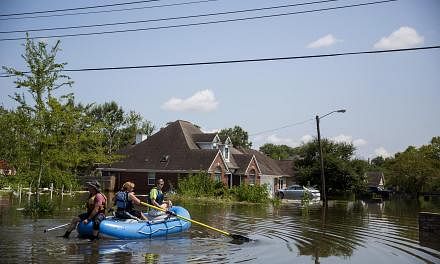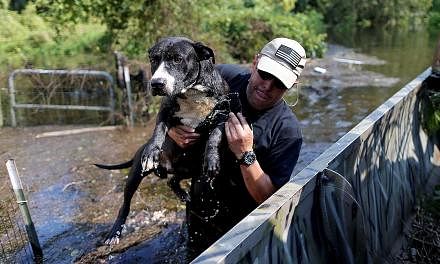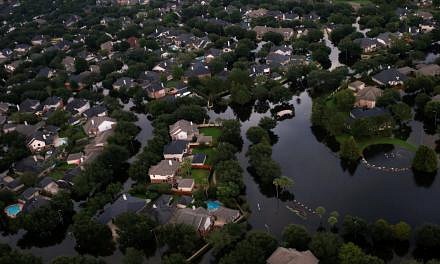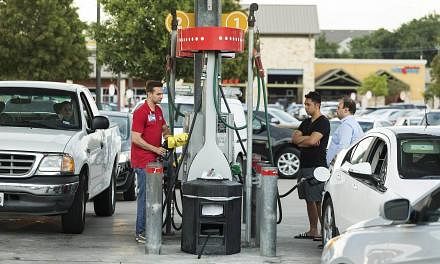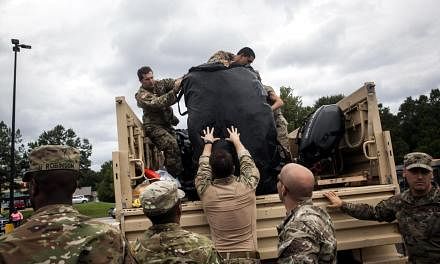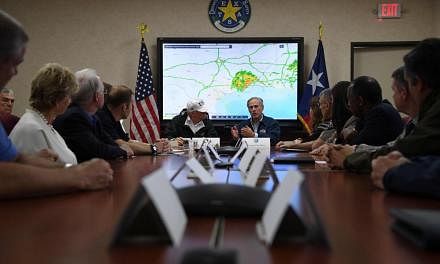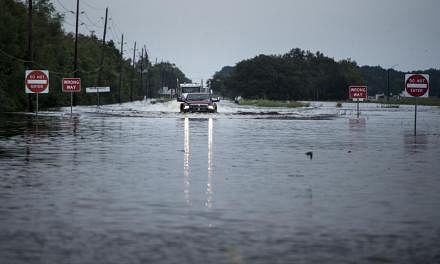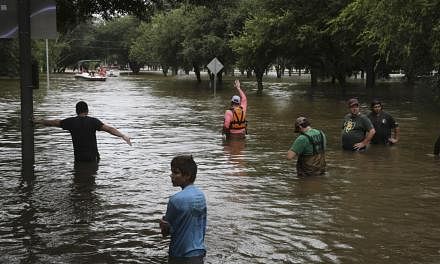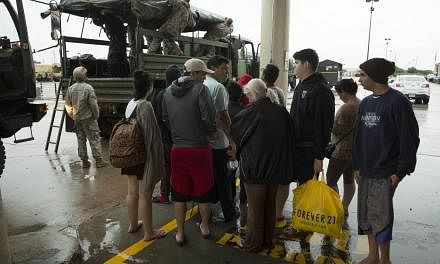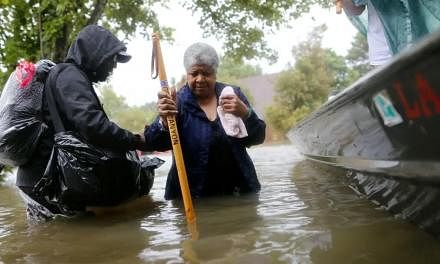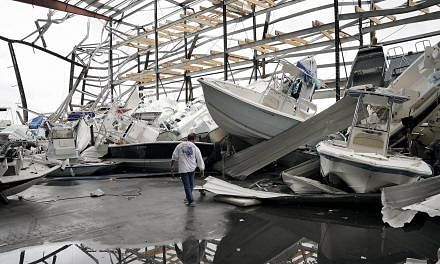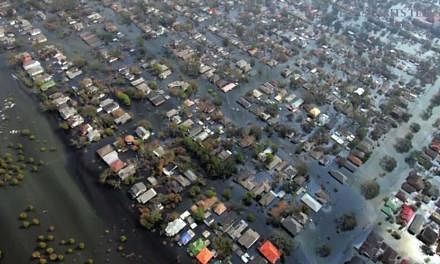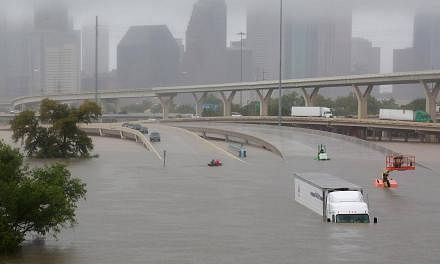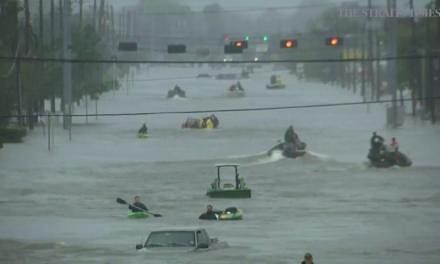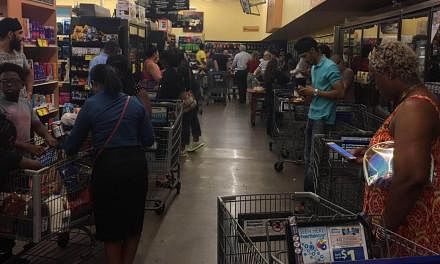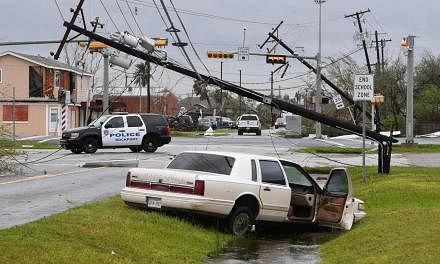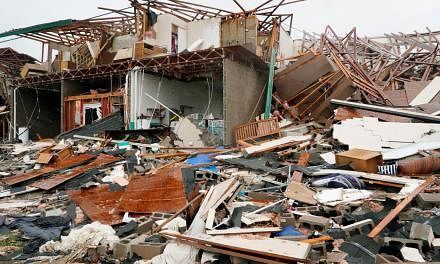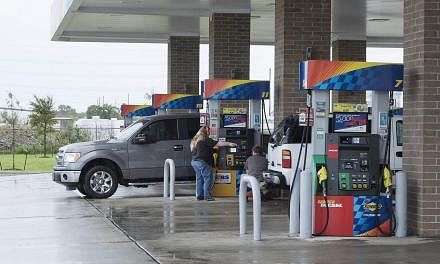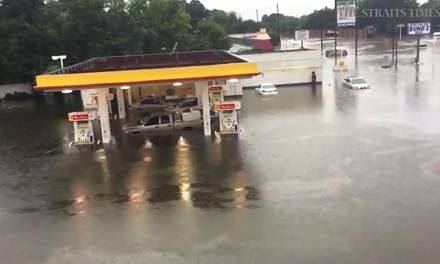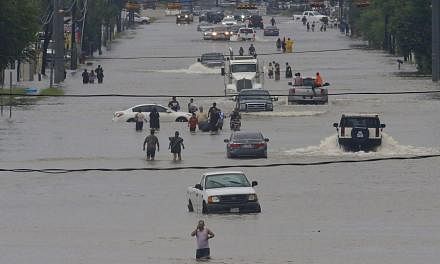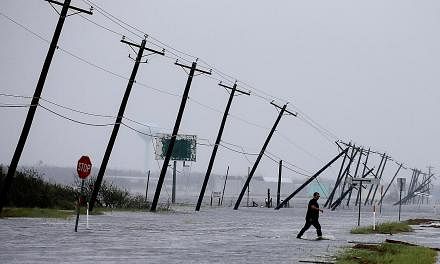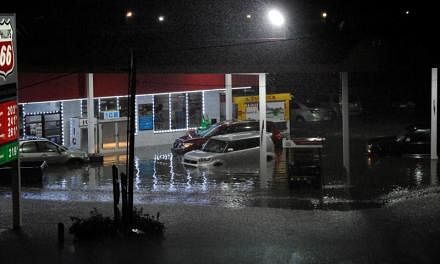WASHINGTON (AFP) - Rapid, poorly regulated urbanisation in Houston has exacerbated the impact of flooding from Hurricane Harvey, experts say, warning that local authorities must pay attention as global climate change threatens to intensify extreme weather events.
A residential and commercial construction boom in the Greater Houston area, even in floodplains, that went practically unrestricted has drastically reduced the ability of the area's soil to absorb rainwater.
At the same time the area saw 42 per cent population explosion between 1995 and 2015, to stand at around 4.4 million people today.
To keep apace, some 10,000ha of swampland and grassy meadows were urbanised, according to research by the Texas A&M University.
The greatest loss of rainwater harvesting areas took place in Harris County, which encompasses Houston, the fourth most populous US city which has seen a 30 per cent of its wetlands disappear.
The Port of Houston and its environs, which lies on average 13m above sea level, has lost the capacity to absorb fifteen billion litresof precipitation in the event of a tropical storm, according to the study.
Harvey dumped an unprecedented 56 trillion litres, or 1.3m, of rainfall over the area.
In addition the expanding drainage system, consisting of a network of reservoirs, canals, bayous and roads, was not designed to cope with storms this large.
TEXAN INDIVIDUALISM
"There are a lot of industries in Houston so there are a lot of jobs and people, and we don't have zoning restrictions in place so you don't have the best planning - and that was one of the shortfalls," said Joel Scata with the non-profit Natural Resources Defence Council.
Since 2010, at least 7,000 residential buildings have been raised in Harris County on land designated by federal authorities as being at risk of flooding.
Local elected officials both in Houston and Harris County for years have resisted stricter construction rules.
Residents voted three times against the adoption of an urban planning code - even though Houston regularly faces tropical storms and flooding, notably in April 2016 and before that May 2015, which claimed 17 and eight lives respectively.
Projects initiated after Hurricane Ike in 2008 to handle regional level flooding have floundered.
"There is no comprehensive regional plan that links the activities of Houston, Harris County and all the communities nears by," said Gerry Galloway, a civil engineering professor at the University of Maryland who works in Texas.
"The culture in Texas is we do our own things," he added.
WAKE-UP CALL?
Left unchecked, chaotic development will increase the risk of severe flooding "even if we did not have climate change" to deal with, Galloway said.
There is broad scientific consensus that rising global temperatures have led to more intense hurricanes like Harvey, as a result of greater energy within weather systems.
Many of the communities worst hit by flooding are also low-income areas where people can rarely afford flood insurance, Galloway said.
He believes the federal government, which is providing reconstruction funding, must play a larger role in imposing strict development standards.
"I am hoping that Harvey will be a wake up call for how the US in general handles development" in the face of such risks, said Scata - though he isn't holding his breath.
Just two weeks ago, President Donald Trump rescinded Obama-era flood protections for federally funded buildings and infrastructure put in place following Hurricane Sandy, which devastated the New Jersey coast and left parts of New York city flooded in 2012.
According to these standards hospitals, retirement homes and other critical infrastructure must be rebuilt on land with low risk of flooding.



